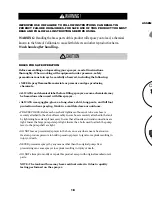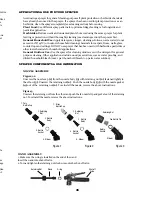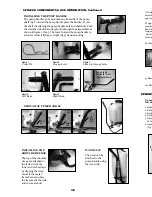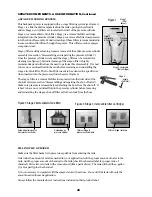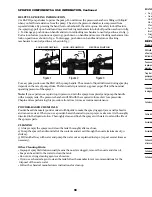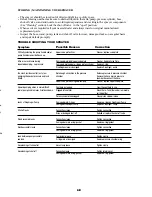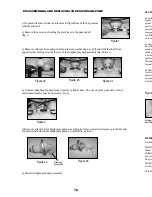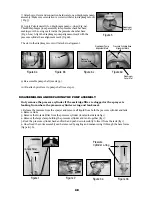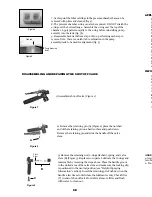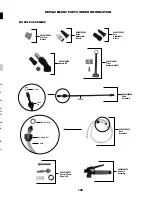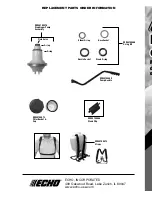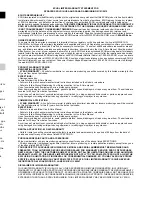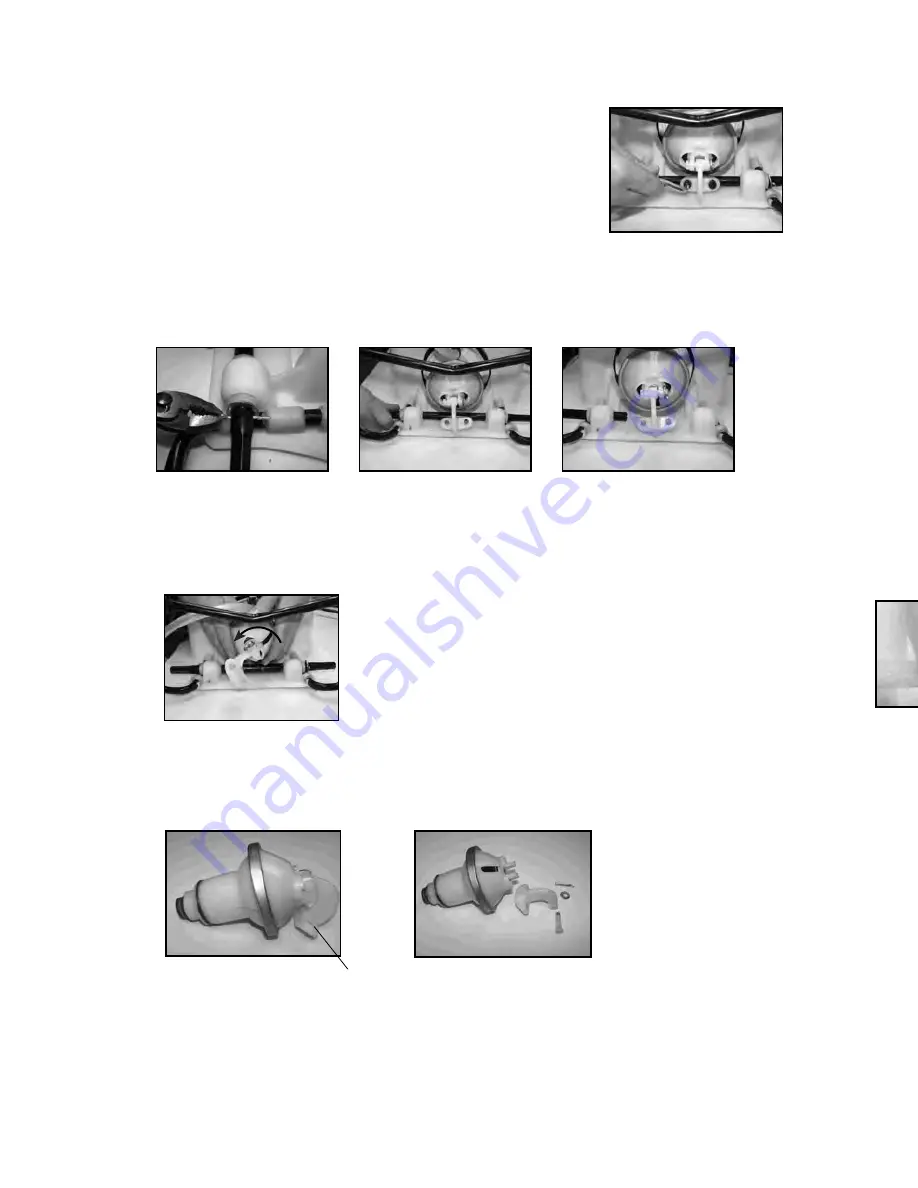
7E
4F
Étape 4
(filtre d'arrêt)
SYSTÈME DE FILTRAGE À 4 ÉTAPES
Ce pulvérisateur de sac à dos est doté d'un système de filtration à 4 étapes (voir la
Figure 1). L'étape 1 est un panier-filtre incorporé dans l'ouverture de la cuve où l'on
ajoute le fluide. Les filtres des étapes 2 et 3 se trouvent à l'entrée du cylindre de
pression. L'étape 2 est un tube à filtre amovible. L'étape 3 est une cartouche à filtre
amovible intégrée dans le cylindre de pression. L'étape 4 est un filtre amovible
incorporé dans l'assemblage d'arrêt. Il est recommandé de nettoyer régulièrement
ces filtres pour assurer une circulation continue de fluide à travers le pulvérisateur.
Ceci réduira aussi l'usure des composants du pulvérisateur.
Le nettoyage de la cartouche du filtre de l'étape 3 exige le retrait de tout l'assemblage
du cylindre de pression (voir la section « démonter et réparer le cylindre de
pression »). Lorsque le cylindre de pression est retiré, le filtre de l'étape 3 peut être
retiré pour son nettoyage (voir la Figure 3). Un nettoyage régulier du filtre de l'étape
2 est fortement recommandé et cela réduira le besoin de ce démontage. Il est
préférable d'avoir peu ou aucun fluide dans la cuve avant de retirer et de réinstaller le
filtre de la cuve de l'étape 2. Le tube de filtre doit être orienté d'une certain façon
lorsqu'il est inséré dans la base du cylindre de pression (voir la Figure 2).
Le filtre d'étape 4 est un filtre amovible incorporé du côté d'entrée de robinet d'arrêt
(voir la section « démonter et réparer le robinet d'arrêt »). Assurez-vous que la
pression est retirée avant d'enlever le boyau du robinet. Il est préférable d'avoir peu
ou aucun fluide dans le cylindre de pression avant de retirer et de réinstaller le filtre
d'arrêt de l'étape 4 car le fluide pourrait couler du boyau.
Étape 1
(panier-filtre)
Étape 2
(tube
amovible)
Figure 1
Étape 3 (cartouche
filtre)
Figure 2 Étape 2 (tube à filtre amovible)
Figure 3 Étape 3 (cartouche à filtre amovible)
Cartouche filtre retirée
Cartouche filtre dans la base
du cylindre de pression
Bord-guide face au côté opposé
du cylindre de pression
Bord-guide face sur le
cylindre de pression
1) De-pressurize the cylinder and remove all liquid from both the pressure
cylinder and tank.
2) Remove the 2 screws attaching the pivot lever to the pump shaft
(fig. 1)
3) Remove cotter pin from pump shaft and remove washer (fig. 2a). Pull and slide the shaft from
opposite side, moving it out of the way of the diaphragm pump assembly (fig. 2b & 2c).
4) Unscrew diaphragm pump from pressure cylinder base. The use of a strap wrench or other
mechanical means may be neccesary (fig. 3).
6) Discard Diaphragm Pump Assembly.
DISASSEMBLING AND REPLACING THE DIAPHRAGM PUMP
5) Remove cotter pin from diaphragm pump assembly pivot lever connection. Remove pivot lever and
connection hardware from diaphragm pump assembly (Fig. 4a & 4b).
Figure 1
Figure 2a
Figure 4a
Figure 2b
Figure 2c
Figure 4b
Figure 3
Pivot Lever
Connection
REMPLIR LE PULVÉRISATEUR
Assurez-vous que le panier-filtre est en place pour empêcher les débris d'entrer dans le réservoir.
Déterminez la quantité de mélange nécessaire pour votre application. Ajoutez la bonne quantité d'eau au
réservoir. Ajoutez la bonne quantité de produits chimiques au réservoir (vérifiez l'étiquette des produits
chimiques pour connaître le bon rapport des produits). Remuez le mélange dans le réservoir avec un
accessoire propre (comme un agitateur de peinture). Le réservoir a une capacité de 15 l (4 gallons) en plus
des produits chimiques.
Il n'est pas nécessaire de remplir le réservoir du pulvérisateur à chaque utilisation. Vous pouvez le remplir
en choisissant seulement la quantité nécessaire pour chaque application.
Suivez toujours les instructions du fabricant qui se trouvent sur l'étiquette du produit.
Cylindre de
pression


